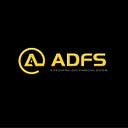A centred financial system (ADFS) — a one-stop solution that benefits blockchain to the general public
Blockchain technology is considered to be the most disruptive technological innovation since the invention of the Internet, it relies on cryptology and Hash functions, game theory and other applied mathematical basic theories, in the Internet can not establish trust relations, without the intervention of any third-party center can make participants reach a consensus, at a very low cost to solve the trust and value of reliable transmission problems.
From the Davos Forum to Chinese Min Bank’s Digital Currency Symposium, from financial giants such as NASDAQ and Citibank to FaceBook, IBM and other tech giants, blockchain is rapidly entering the public eye and policy level, due to the natural financial properties of blockchain, more and more financial assets are mapped to blockchain networks to form more liquid digital assets, which indicates that the digitization of human assets has become inevitable, in the process of asset digitization, Blockchain technology should be integrated with the real business world, with the real economy, with global financial markets, in order to give full play to the true value of blockchain technology.
Recently, ADFS ,a de-centralized financial system developed by the globally based technology Tana based on the ETH chain, is entering the public eye, and its emergence satisfies all illusions about de-centralized finance.
As a value project for de-centralized finance in 2021, ADFS has achieved the perfect combination of blockchain technology and finance, with the aim of creating a simple, borderless de-centralized financial system, a de-centralized, highly agreed DEFI agreement, and a financial facility for more people.
ADFS’s unconscmented financial system is designed to create a global, open, free and equitable blockchain financial system that allows users to easily use financial services such as financial derivatives such as storage, lending, payment, finance, insurance, and more without any restrictions on race, religion, age, nationality, geography, etc.
Features of the ADFS’s centred financial system:
1, financial agreements: products involved in mining, lending, payment transactions, insurance, derivatives, asset management and so on.
2, no license: no third-party license.
3, anonymity: the use of “ADFS” protocol does not need to reveal their identity.
4, no hosting: no third-party hosting dependencies.
5, the centralization of governance: community autonomy, we are in control.
6, user assets, chain open, transparent, free access to real-time.
What can the ADFS’s centralized financial system solve?
The core object of finance is money. Money is a spontaneous, not innate, part of the development of human society. The human exchange was a material exchange at first, but the biggest problem with the exchange was inefficiency, because it was difficult to find two people who happened to have items to match, and it was difficult to strike a deal between a fisherman who needed shoes and a shoemaker who needed grain.
Even if the demand matches, how many pounds of fish can a pair of shoes be exchanged for? How to price is another question. Therefore, the demand for money has emerged, people need a currency between different items to achieve exchange, this currency becomes a medium of exchange, but also can store value, can not buy 10 fish today currency tomorrow can only buy 1 fish.
Human history has had shells, precious metals, gold and silver and other currency, developed to this day, is the French currency.
Through the integration and operation of intermediary institutions, traditional finance has improved the efficiency of the market and realized better resource allocation. But at the same time, because of the existence of intermediaries, the traditional financial system has also produced many problems, such as opacity, currency abuse and so on.
This leads to excessive debt and excessive inflation, and economic crises can easily break out once economic growth stagnates or the distribution of the economy is unecontracted and the debt structure is not digested in a timely manner.
In the current intermediation-led financial structure, the economic crisis seems to be difficult to avoid, and it continues.
The core of blockchain is the centering, transparency, distributed, etc., which gives it the opportunity to completely change the current status quo of the traditional centralized financial structure. This is the key to the existence of ADFS’s centered finance.
So far, the centred finance has been far from successful, even compared with Bitcoin’s breakthrough. Compared with traditional finance, its magnitude is not even nine cattle and a hair. But why does it matter?
The goal of the ADFS’s uncentricized financial system is to build a transparent financial system that is open to all and does not require permission to meet financial needs without relying on third-party institutions. e.g. borrowing, trading, payments, and derivatives.
It’s open finance, it’s the infrastructure of blockchain, it’s an extension of Bitcoin.
Its most important feature is verifiability and transparency. Blockchain allows people to verify every transaction that occurs on it and see what’s really transparent about what’s happening through blockchain.
Therefore, the advent of the uncentricized financial system ADFS, that is, to solve the traditional centralized financial opacity, but also to solve the financial history of a series of shortcomings similar to the economic crisis.
Although de-centralized finance DeFi is still very small, but according to its current development trend, it is trying to build a parallel field with traditional finance, but also try to combine with traditional finance to achieve new features, which is a very interesting and worthy of our in-depth exploration and research. In the future, de-centralized financial DeFi is bound to go down in history because it truly matches products and markets.
